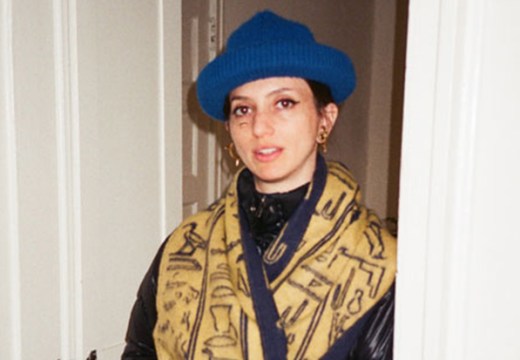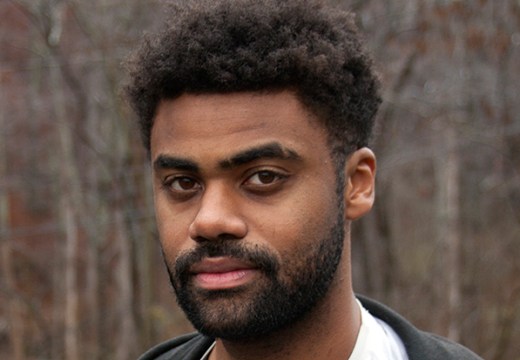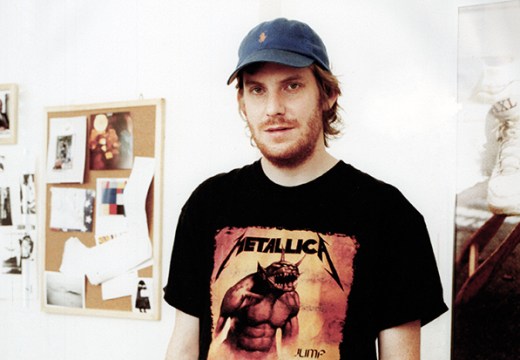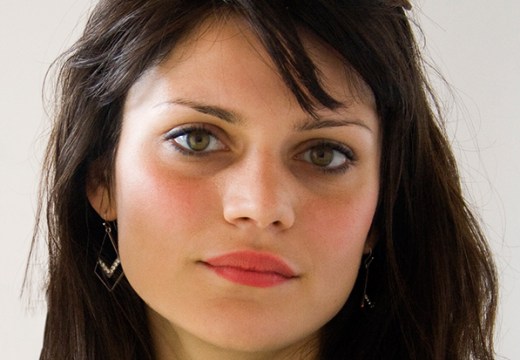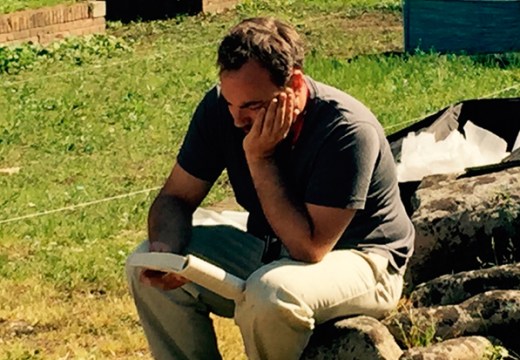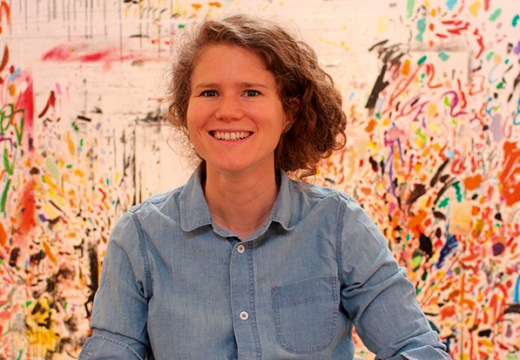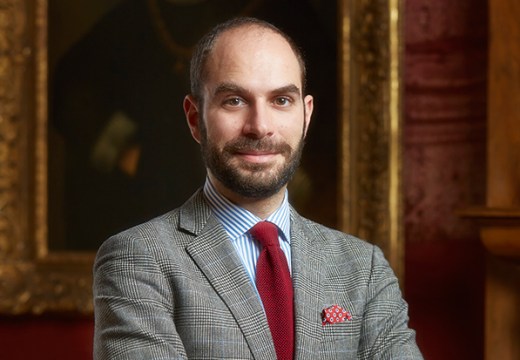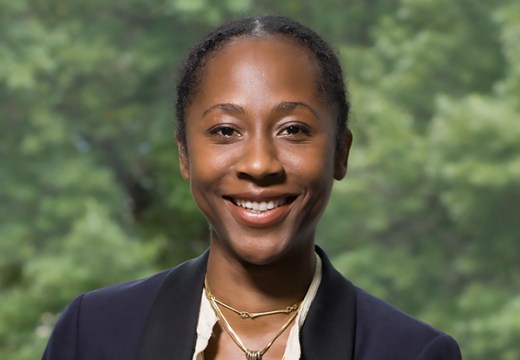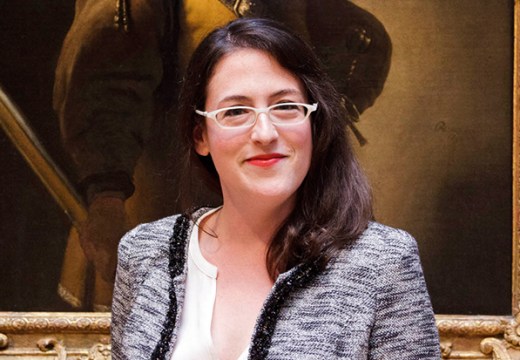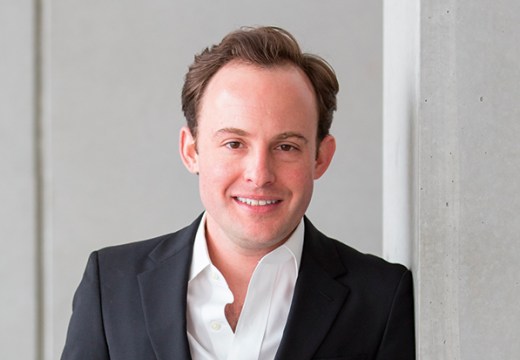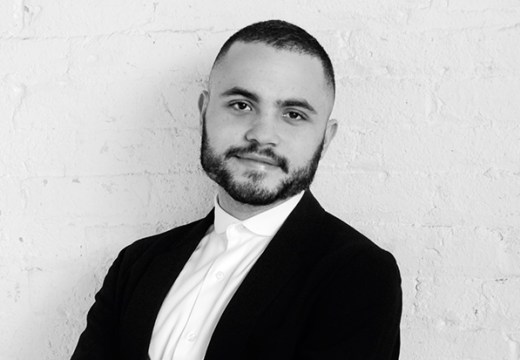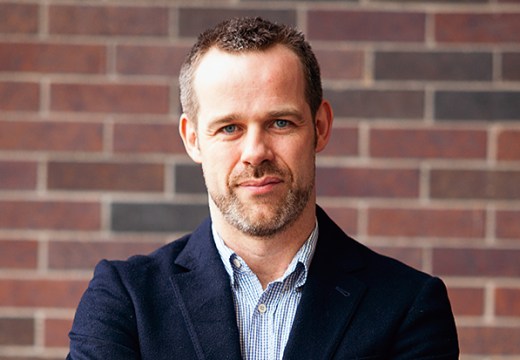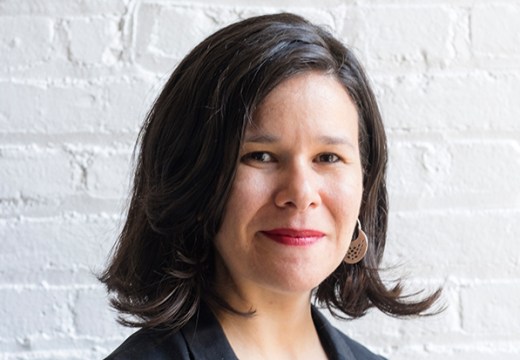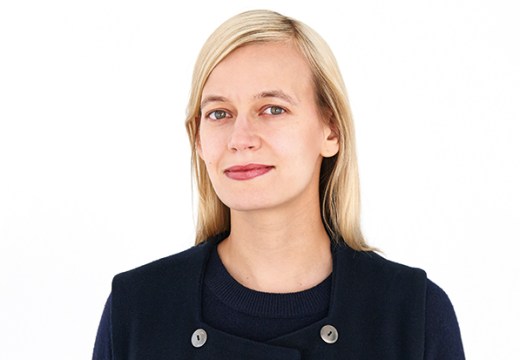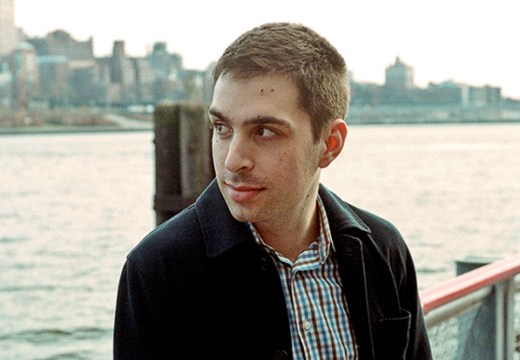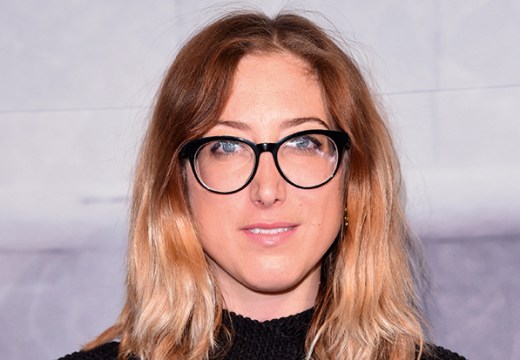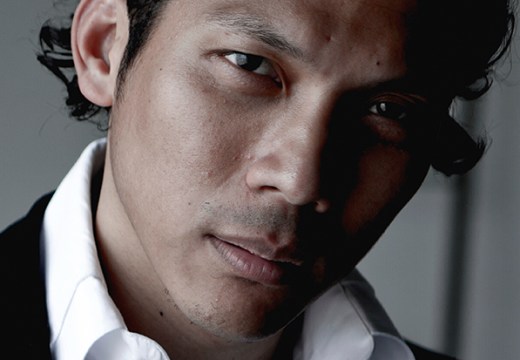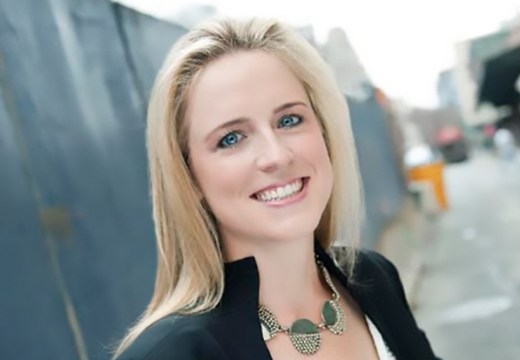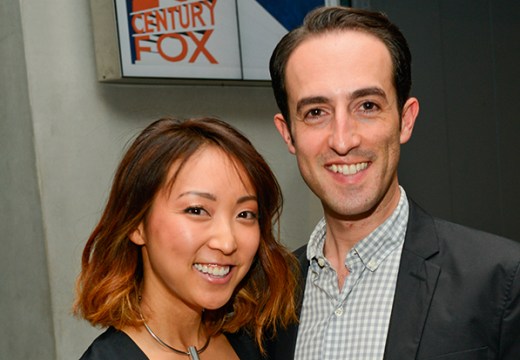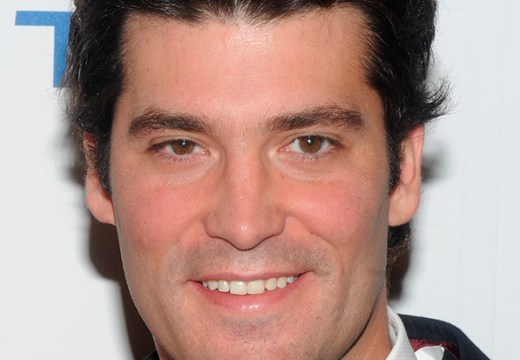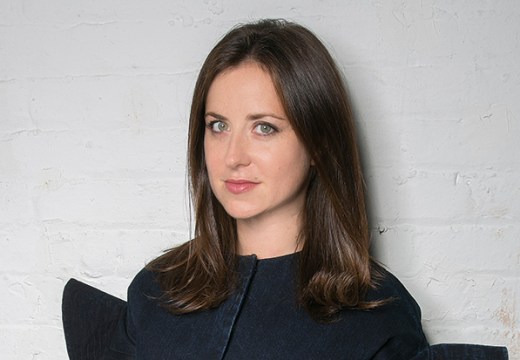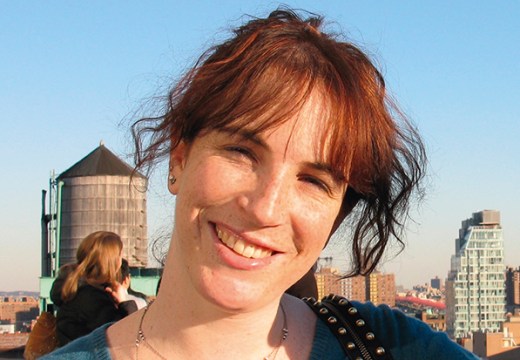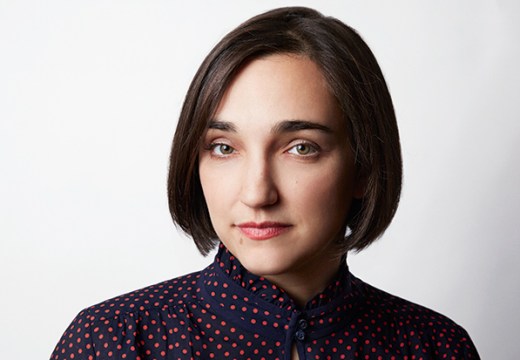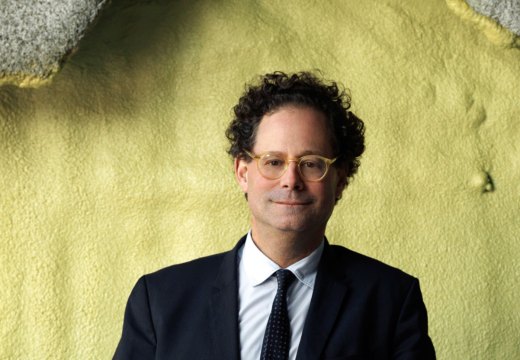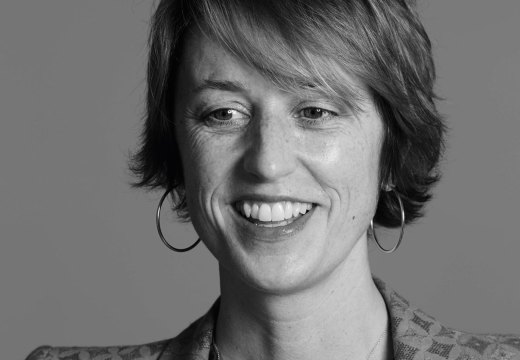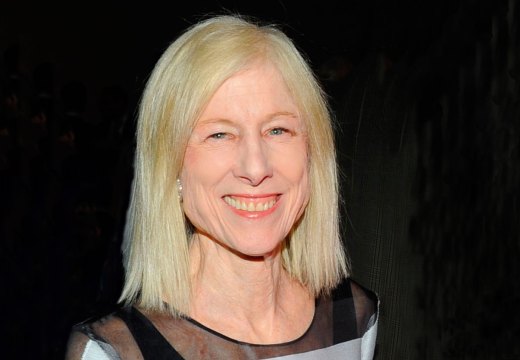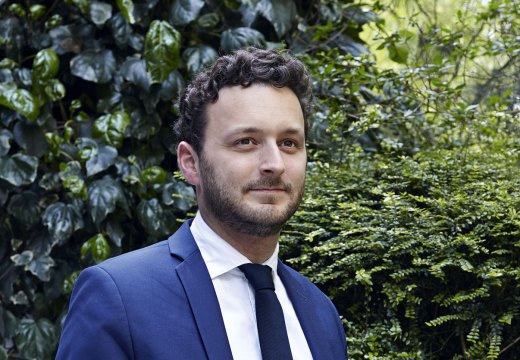by Pei-Ru Keh, Wallpaper

Next week, the world’s design and art communities will embark upon their annual five-day sojourn to Florida’s balmy climes to attend Design Miami (2 – 6 December). Now in its 11th year and bolstered by the city’s rapidly developing Design District, this year’s edition promises to be the most diverse to date. Among the week’s obligatory poolside parties and soirées, works by established and emerging designers from galleries across five continents will tempt buyers while a packed programme of installations, retail-driven projects, happenings and talks looks set to delight. We put this year’s must-see events on the map…

‘Terra Continens’ table by Karen Chekerdjian
Carwan Gallery
Dedicated to internationalising Middle Eastern contemporary design since opening in 2010, the Beirut-based Carwan Gallery has been a key figure in promoting cross-cultural collaborations. Its Miami efforts focuses on one designer, Karen Chekerdjian, a pioneering design force who founded her design studio in Beirut more than 12 years ago. Presented for the first time on this side of the Atlantic, the works on view represent the best of Chekerdjian’s career and highlights her ability to experiment with unexpected materials.
Design Miami, Meridian Avenue and 19th Street, adjacent to the Miami Beach Convention Center, Miami Beach
2 – 6 December, www.designmiami.com(opens in new tab), www.carwangallery.com(opens in new tab)

‘Unbuilt’ models in Harvard GSD’s central studio space, Gund Hall, designed in 1972 by Harvard GSD alumnus John Andrews. Photography: Steven Brahams
Harvard Graduate School of Design
As we first reported in our December issue (W*201), Design Miami tasked a student team from Harvard University’s Graduate School of Design (GSD) to devise its entry pavilion, marking the first time the fair has collaborated with an educational institution in such a significant way. The students, who are currently in their second year at GSD, tapped into the collective catalogue of unrealised projects from their peers to create Unbuilt, a canopy of hand-milled, pink foam models, which will be accompanied by an app for easy identification so as to ensure that each project and designer has its day.
Design Miami, Meridian Avenue and 19th Street, adjacent to the Miami Beach Convention Center, Miami Beach
2 – 6 December, www.designmiami.com(opens in new tab), www.gsd.harvard.edu(opens in new tab)

‘Anil’ chair by Zanini de Zanine, 2012
Espasso and Arte Club Jacarandá
Flying the flag for Brazil’s plentiful creative contributions is a special exhibition of the country’s art and design offerings curated by Espasso and the Rio de Janiero-based collective Arte Club Jacarandá. With highlights including paintings by the iconic artist Carlos Vergara and the equally celebrated Carlito Carvalhosa, and furniture by Zanini de Zanine, Sergio Rodrigues and Claudia Moreira Salles, the exhibition paints a holistic portrait of Brazil’s collectible art and design scene. To top it off, the exhibition will be staged in the penthouse of the Shore Club hotel, which will officially be part of the Fasano family when it reopens in 2017.
Fasano Hotel and Residences at Shore Club, 1901 Collins Avenue, Miami Beach
Open to the public 3 – 6 December and by appointment 7 – 31 December, www.espasso.com(opens in new tab), www.fasanoshoreclub.com(opens in new tab)

‘Model Art Pavilion’ by Gluckman Tang
Revolution Pre-Crafted Properties
Taking collectible design to the next level is Revolution Pre-Crafted Properties, a limited edition collection of prefabricated living spaces (pavilions and homes included), brought to you by gallerist/collector Edward Tyler Nahem and real estate developer/collector Robbie Antonio. Conceived by Antonio, the project will feature contributions by more than 30 leading architects, designers and artists. The series launches in Miami with fully realised constructions of Zaha Hadid’s VOLU Pavilion and Gluckman Tang’s Model Art Pavilion.
Design Miami, Meridian Avenue and 19th Street, adjacent to the Miami Beach Convention Center, Miami Beach
2 – 6 December, www.designmiami.com(opens in new tab), www.revolutionprecrafted.com(opens in new tab)

‘Untitled’, by Laddie John Dill, 1971. Courtesy of the artist and Ace Gallery Los Angeles
LAX – MIA: Light + Space
Amongst the numerous Art Deco hotels currently being rejuvenated in Miami is The Surf Club, located in Miami Beach. Soon to be reopened with a new Richard Meier design and operated by The Four Seasons, the property in collaboration with Fort Partners will host ‘LAX – MIA: Light + Space’, an art exhibition curated by Parallel, comprising architecture curator Terence Riley, architect John Keenen and art historian Joachim Pissarro. Focusing on Los Angeles’ Light and Space art movement of the 1970s and featuring works by DeWain Valentine, Larry Bell and Helen Pashgian, the exhibition will show how the movement’s ethos and aesthetics reflect the ideology behind Meier’s concept for the redesigned hotel.
The Surf Club, 9011 Collins Avenue, Miami Beach
1 – 12 December, www.thesurfclub.com(opens in new tab)

‘BMW’ rug by Seletti Wears Toiletpaper.
Toiletpaper, Gufram and Seletti
We’d jump at any chance to step into the colourful, irony-soaked world of Toiletpaper, the provocative art publication from Maurizio Cattelan and Pierpaolo Ferrari. The visual maestros will takeover the lounge at the Untitled art fair with new carpets from the Seletti Wears Toiletpaper collection, which makes its debut in Miami. The space will also be dressed with the brand’s iconic furniture produced by Gufram.
Untitled, Ocean Drive and 12th St, Miami Beach
2 – 6 December, www.art-untitled.com(opens in new tab), www.toiletpapermagazine.org(opens in new tab), www.seletti.it(opens in new tab), www.gufram.it(opens in new tab)

‘Self Portrait’ by Andy Warhol
MoMA Design Store
Granted that most of the art collecting does take place at the numerous fairs that sprout up in South Beach, a visit to the Delano Hotel is definitely in order, especially if you are an Andy Warhol fan. Thanks to the Museum of Modern Art (MoMA) Design Store, the Andy Warhol Foundation has teamed up with The Skateroom – a collective that invites contemporary artists to create art on skateboards – on a limited edition collection of skate decks. Installed throughout the legendary hotel, there will be boards featuring 32 varieties of Campell’s soup cans, as well as triptychs with Gold Marilyn Monroe, Guns, Car Crash, Self Portrait and Detail of the Last Supper. Each will be available for purchase in limited quantities.
Delano South Beach, 1685 Collins Avenue, South Beach
30 November – 6 December, www.momastore.org(opens in new tab), www.delano-hotel.com(opens in new tab)

Design Miami’s identity has been conceived by illustrator Pierre Le-Tan this year
Design Miami capsule collection by Pierre Le-Tan
While we’d all like to leave Miami with a work of art or a piece of collectible design, sometimes it’s just not the case. This year, however, worthy souvenirs come in the form of a collection of Design Miami merchandise featuring illustrations by Pierre Le-Tan. Depicting a range of Miami-related motifs, such as palm tress, Art Deco architecture and key lime pies in Le-Tan’s playful style, the offbeat range includes socks, umbrellas, scarves and bow ties. With offerings for both men and women, the 11-piece limited edition collection will be available at the fair’s new Market.
Design Miami, Meridian Avenue and 19th Street, adjacent to the Miami Beach Convention Center, Miami Beach
2 – 6 December, www.designmiami.com(opens in new tab)

Inspired by the sky’s degradé hues, New York design studio Snarkitecture will transform the exterior of one of Netjets’ signature private planes
Netjets and Snarkitecture
The official partner of Art Basel for the last 14 years, Netjets is the only way we would fly to Miami if the choice were up to us. This year, the private jet company has recruited Snarkitecture to create an installation that will put its Signature Series Global 5000 aircraft in the spotlight. Staged at the Landmark Aviation private jet terminal in Miami International Airport, Snarkitecture will reimagine the jet’s exterior as a sight pilots flying at dawn or dusk usually experience: an ombré-tinted sky.
Landmark Aviation, Miami International Airport, 5700 NW 36th St, Miami
1 – 6 December, www.netjets.com(opens in new tab), www.snarkitecture.com(opens in new tab)

Site-specific poolside painting by Katherine Bernhardt at Nautilus hotel
Artsy and Sixty Hotels
We first waxed lyrical about Sixty Hotels’ newest addition, Nautilus, fresh after it was given the Jason Pomeranc treatment. Now, the hotel group has teamed up with Artsy for a week’s worth of programming, ranging from performances and installations to a designer popsicle truck, naturally. Food aside, Artsy has commissioned the artist Katherine Bernhardt to create an original pool painting for the hotel, thus continuing a tradition of which David Hockney, Keith Haring and Pablo Picasso have all contributed to.
Nautilus, 1825 Collins Ave, Miami Beach
30 November – 6 December, www.artsy.net(opens in new tab), www.sixtyhotels.com(opens in new tab)

Render of ‘El Sol’ by Fernando Romero
Swarovski
The Mexican architect Fernando Romero is the driving force behind El Sol, a statuesque geodesic structure composed of 2,880 custom-made Swarovksi crystals that will take over the company’s booth at Design Miami. Designed at a scale of one billion times smaller than the sun, the sculpture mimics the sacred geometry that the ancient Aztec and Mayan civilisations used to construct their pyramids, which were conceived to observe the skies – with the added benefit of modern technology, of course. The installation is made up of an intricate puzzle of precision-cut crystals, each individually coated in Swarovski’s Aurora Borealis coating. Lit from within, it will evoke the sun’s pulsating force to an inspiring degree.
Design Miami, Meridian Avenue and 19th Street, adjacent to the Miami Beach Convention Center, Miami Beach
2 – 6 December, www.designmiami.com(opens in new tab), www.swarovski.com(opens in new tab)

‘Fragments’ dining table by Lex Pott for The Future Perfect
The Future Perfect, Lex Pott and Calico Wallpaper
A longtime stalwart of the New York design scene, retail platform The Future Perfect makes its debut at Design Miami this year with an immersive installation that showcases the work of the Dutch designer Lex Pott and Brooklyn-based Calico Wallpaper. The environment will present newly commissioned stone furniture by Pott against handpainted gradient wall coverings from Calico made using pulverised minerals and stones. The backdrops will also be painted live onsite, bringing a performance aspect to the exhibition.
Design Miami, Meridian Avenue and 19th Street, adjacent to the Miami Beach Convention Center, Miami Beach
2 – 6 December, www.designmiami.com(opens in new tab), www.thefutureperfect.com(opens in new tab), www.lexpott.nl(opens in new tab), www.calicowallpaper.com(opens in new tab)

‘6 x 6 An Improvisation’, by Larry Bell, 2014-2015. © The artist. Courtesy of Chinati Foundation.
White Cube
Leave it to White Cube to veer off-piste, taking its Miami presence to a satellite venue for the first time. In addition to its booth at Art Basel Miami Beach, the international gallery pitches up in the Melin Building with a bewitching installation by the artist Larry Bell, a leading exponent of California’s Light and Space movement. 6×6 An Improvisation was first exhibited at The Chinati Foundation in Marfa, Texas from 2014-2015 and is made up of 30 glass panels that respond to changing light conditions at different times of day. The glass, which has been treated with a nickel-chrome finish, produces an effect that’s both dramatic and visually complex.
Suite #200, Melin Building, 3930 NE 2nd Ave, Miami
2 December – 9 January 2016, www.whitecube.com(opens in new tab)

Render of Fendi’s pavilion at Design Miami
Fendi
Moving house is always a good opportunity to clear out the rafters. In Fendi’s case, its recent relocation to new headquarters in Rome’s historic business district at the Palazzo della Civiltà Italiana – otherwise known as Square Colosseum – revealed a series of unrealised furniture designs envisioned by architect Guglielmo Ulrich for the district. Under Fendi’s watch, Ulrich’s designs for an S-shaped sofa, gold-capped lampshades and a rosewood table among others, have been beautifully brought back to life – almost 70 years after they were first conceived.
Design Miami, Meridian Avenue and 19th Street, adjacent to the Miami Beach Convention Center, Miami Beach
2 – 6 December, www.designmiami.com(opens in new tab), www.fendi.com(opens in new tab)

Lambs wool blanket by Ella Kruglyanskaya (left) and tea towels by Peter Saville
House of Voltaire
The London-based art charity Studio Voltaire brings its beloved pop-up retail concept House of Voltaire to the beaches of Miami this year. Armed with a new collection of specially commissioned homeware, accessories and clothing, House of Voltaire will move into a temporary home at New Art Dealers Alliance (NADA) Miami Beach. Visitors can procure tea towels by Peter Saville; lambs wool blankets by the artists Marc Camille Chaimowicz and Ella Kruglyanskaya; and ceramics by the fashion designer Roksanda Ilincic. They will also be able to peruse other sought after projects, such as a limited edition silk top by Ilincic and Eva Rothschild and a photographic collaboration between Simone Rocha and Kim Gordon.
NADA, 4441 Collins Ave, Miami Beach
3 – 5 December, www.studiovoltaire.org(opens in new tab), www.newartdealers.org













